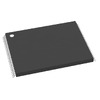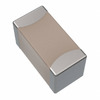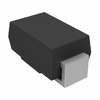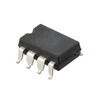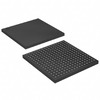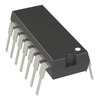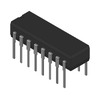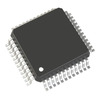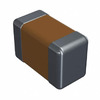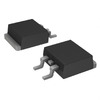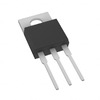An In-Depth Look at the 1N4148 Diode for Industrial and Communication Uses
Overview of 1N4148
1N4148 is a small, high-speed switching diode with rapid switching speed, so it is widely used in circuits with high signal frequency for single-lead isolation, such as computer boards, communications, television circuits and industrial control circuits. It is available in DO35, LL34, SOT23, SOD323 and other packages. It is a very popular and long life switching diode due to its reliable specifications and low cost. The 1N4148 is suitable for switching applications at about 100 MHz and has a reverse recovery time of no more than 4 ns.
Catalog
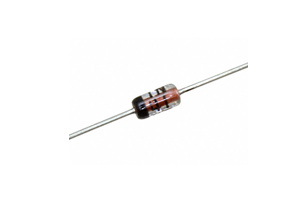
Replacements and Equivalents
• 1N4148TR
• 1N4148WS
• 1N4448
• 1N914A
• 1N914A
• 1N916A
What Are the Features of 1N4148 Diodes?
• It has a low reverse withstand voltage of 100V and an average forward current of 150mA.
• The 1N4148 employs an advanced glass package technique, known for its exceptional reliability and stability. This method ensures robust protection for the internal circuits and components, enhancing overall performance.
• Its junction capacitance and reverse recovery time are sufficient to meet the requirements of most applications.
• The 1N4148 exhibits rapid switching speed and is capable of managing high-frequency signals. In circuits that involve swift switching, the prompt response attributes of the 1N4148 effectively mitigate signal distortion and minimize signal attenuation.
• The diode's quick reverse recovery time, measured in nanoseconds, contributes to minimizing power losses during the switching process.
Symbol, Footprint, and Pin Configuration of 1N4148 Diodes

The pictures above are the symbol, footprint, and pin configuration of 1N4148. Among them, 1N4148 has two pins, whose names and descriptions are as follows.
Pin 1 (Anode): Current always enters through the anode.
Pin 2 (Cathode): Current always exits through the cathode.
How Does the 1N4148 Diodes Work?
N4148 is a common fast recovery diode whose working principle is based on the rectification characteristics of PN junction. When a forward voltage is applied, the P region absorbs electrons and the N region absorbs holes. Since there is a depletion region between the P region and the N region, current cannot flow through the diode at this time. However, when a reverse voltage is applied, the depletion region between the P region and the N region will further expand, and current cannot flow through the diode at this time.
When the reverse voltage reaches a certain value, it will cause the PN junction to break down, and the electric field intensity in the depletion region will increase. Under the acceleration of the electric field, electrons and holes will be accelerated and pass through the depletion region, making the diode conductive and forming a very small current path. The resistance of this current path is very low, so we can approximate it as a wire.
What Are the Applications of 1N4148 Diodes?
1N4148 is commonly used in the following fields:
• Current regulator
• Pulse circuit
• Signal filtering/detection
• Digital logic circuits
• Half-wave and full-wave rectifiers
• Universal and high-speed switching
• Mixers and tuners
Technical Parameters of 1N4148 Diodes
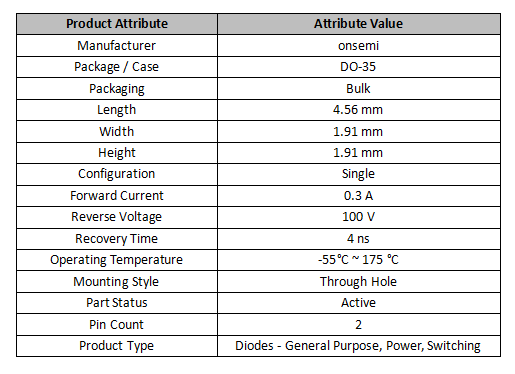
Common Packages of 1N4148 Switching Diodes
Common packages of 1N4148 switching diodes include DO35, LL34, SOD323, and SOT-23.
• DO35 package: This is an axial leaded package with lead length of 25.40mm at both ends, base length of 4mm and diameter of 2mm.
• LL34 package: It is a cylindrical surface-mount glass package with a cylinder length of 3.30mm and a diameter of 0.13mm.
• SOD323 package: It is a 2-pin plastic surface mount package with a pitch of 1.3mm and an overall dimension of 1.70 mm x 1.25mm x 0.95mm.
• SOT-23 package: It is an ultra-thin package, suitable for low-power circuits, and can effectively save PCB space. This kind of package design is transistor type and has a compact appearance. It is now widely used by diode manufacturers.
How to Judge the Positive and Negative Poles of 1N4148 Diodes?
In a 1N4148 diode, we usually use the end with the shorter lead as the negative (cathode) and the end with the longer lead and printed markings as the positive (anode). In addition, when testing 1N4148 diodes, we use the diode test function of the multimeter. If the test result shows a conductive state, it indicates that the port is connected to the positive terminal, otherwise it is connected to the negative terminal.
How to Detect the Quality of 1N4148 Diodes?
In the actual circuit, the 1N4148 may be damaged or aged, and we need to test and replace it. Here are a few simple measurements.
Observe the Thermal Effect
When using 1N4148, if we find obvious heating around the components, it may be a sign of damage or aging of the 1N4148.
Transistor Tester
We use a transistor tester to directly measure the forward voltage, reverse resistance and other parameters of 1N4148 to determine whether it is normal.
Multimeter Test
We set the multimeter to the diode test position, use the black probe to contact the positive electrode of the PN junction of 1N4148, and the red probe to contact the negative electrode of the PN junction. If the multimeter shows forward voltage, it means that the part is positive; if the multimeter shows reverse voltage or the test result is no continuity, it means that the part is negative.
It should be noted that when measuring 1N4148, we should disconnect the circuit and make sure there is no input voltage to avoid affecting other components during the measurement process. At the same time, we should also choose the appropriate measurement method and conduct system testing and optimization based on actual applications.
Frequently Asked Questions [FAQ]
1. What Is 1N4148 Diode Used For?
The 1N4148 diode is frequently used in applications such as voltage clamping, signal rectification, and signal mixing. It is also used in small-signal amplifiers, oscillators, and voltage regulators.
2. How Do I Identify a 1N4148 Diode?
The 1N4148 is the neat looking orange-and-black diode, where the black line marks the negative (cathode) side. The 1N4001 is the black and gray diode, and the gray line marks its cathode.
3. Is 1N4148 a Zener Diode?
1N4148 1W Zener Diode is a general-purpose silicon diode. For the protection of various devices, regulating current flow, etc this diode is useful.
4. What Is the Difference Between 1N4007 and 1N4148?
What is the difference between 1N4148 and 1N4007? The 1N4148 is a 100V, 150mA switching diode. It is of the nS level and has a quick reverse recovery speed. The 1N4007 is a low-frequency rectifier diode that can tolerate 1000V, 1A current, and has a reverse recovery time of uS.
5. Can I Use 1N4001 Instead of 1N4148?
Either of those diodes should work, but the 1N4001 is a better choice because it is the "bigger" device: the 4001 is a 1 amp rectifier, whereas the 4148 is a 100mA little signal device. For small relays, it's fine.
About us
ALLELCO LIMITED
Read more
Quick inquiry
Please send an inquiry, we will respond immediately.
→ Previous

In this article we will explore the main differences between the L293D and L298N motor drivers. Both motor drives have their own unique features and applications. Understanding the difference between the two can help us better choose the appropriate motor control product. Let's take a look at the di...
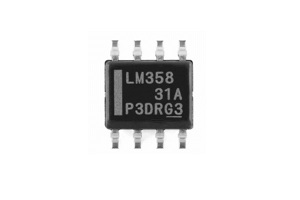
Overview of LM358 Operational Amplifier The LM358 is a low power dual operational amplifier consisting of two independent high gain internal frequency compensated operational amplifiers. It is designed for single-supply operation over a wide voltage range. In addition, it features low power consumpt...
→ Next

Choosing the Right Motor Driver: The Differences Between L293D and L298N Motor Drivers
on April 29th

LM358 vs. LM393: Learn about the LM358 op amp and the differences between op amps and comparators
on April 29th
Popular Posts
-

What is GND in the circuit?
on January 1th 3272
-

RJ-45 Connector Guide: RJ-45 Connector Color Codes, Wiring Schemes, R-J45 Applications, RJ-45 Datasheets
on January 1th 2815
-

Understanding Power Supply Voltages in Electronics VCC, VDD, VEE, VSS, and GND
on November 20th 2640
-

Fiber Connector Types: SC Vs LC And LC Vs MTP
on January 1th 2265
-

Comparison Between DB9 and RS232
on January 1th 1882
-

What Is An LR44 Battery?
Electricity, that ubiquitous force, quietly permeates every aspect of our daily lives, from trivial gadgets to life-threatening medical equipment, it plays a silent role. However, truly grasping this energy, especially how to store and efficiently output it, is no easy task. It is against this background that this article will focus on a type of coin cell battery that may seem insignificant on the...on January 1th 1846
-

Understanding the Fundamentals:Inductance Resistance, andCapacitance
In the intricate dance of electrical engineering, a trio of fundamental elements takes center stage: inductance, resistance, and capacitance. Each bears unique traits that dictate the dynamic rhythms of electronic circuits. Here, we embark on a journey to decipher the complexities of these components, to uncover their distinct roles and practical uses within the vast electrical orchestra. Inductan...on January 1th 1807
-

What Is RF and Why Do We Use It?
Radio Frequency (RF) technology is a key part of modern wireless communication, enabling data transmission over long distances without physical connections. This article delves into the basics of RF, explaining how electromagnetic radiation (EMR) makes RF communication possible. We will explore the principles of EMR, the creation and control of RF signals, and their wide-ranging uses. The article ...on January 1th 1801
-

CR2430 Battery Comprehensive Guide: Specifications, Applications and Comparison to CR2032 Batteries
What is CR2430 battery ?Benefits of CR2430 BatteriesNormCR2430 Battery ApplicationsCR2430 EquivalentCR2430 VS CR2032Battery CR2430 SizeWhat to look for when buying the CR2430 and equivalentsData Sheet PDFFrequently Asked Questions Batteries are the heart of small electronic devices. Among the many types available, coin cells play a crucial role, commonly found in calculators, remote controls, and ...on January 1th 1799
-

Comprehensive guide to hFE in transistors
Transistors are crucial components in modern electronic devices, enabling signal amplification and control. This article delves into the knowledge surrounding hFE, including how to select a transistor's hFE value, how to find hFE, and the gain of different types of transistors. Through our exploration of hFE, we gain a deeper understanding of how transistors work and their role in electronic circu...on November 20th 1782

